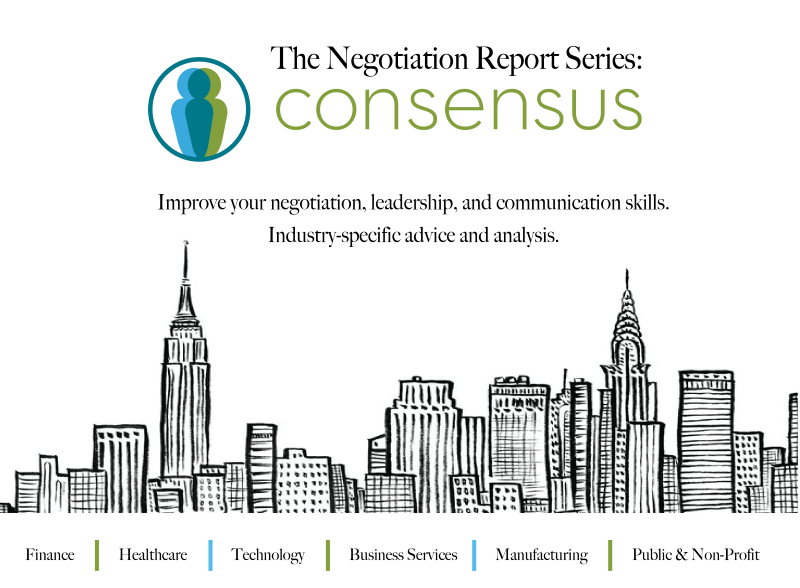Negotiation Report: Healthcare 1

Healthcare Negotiation Report: Know-It-All Patients
Improving Patient Communication While Deescalating Patient Conflict
Healthcare professionals face unique negotiation and communication challenges. Healthcare is a multifaceted industry in which healthcare professionals work in various circumstances and with a range of people—patients, administrators, nurses, unions, office staff, doctors, and federal authorities. Thus, a one-fits-all approach to negotiation and communication often does not fit at all.
In this edition of the Healthcare Negotiation Report, we examine one example of challenging doctors-patient communication, and provide some suggestions about how to handle these types of challenges and improve patient relationships.
Challenging Conversations
Medical professionals benefit from well-honed people skills. Doctors and nurses are in positions to help define patient comfort, safety, and understanding. Nonetheless, doctor-patient communication may approach a seemingly unbridgeable divide.
Dr. “Smith”, a physician in Providence, RI who we interviewed for this article, says that she works with different types of patients, each with specific communication needs. Some patients “want to be told what to do.” On the other extreme, there are patients who “are more aware. They’re on the Internet, and they think they know what they have. They’re more adamant and intense…even if they’re wrong.”
Smith’s approach for the latter group is to “listen more, and then undo lots of stuff. Some [patients] listen, some [patients] continue to preach what they think. Now that I’ve been doing this a long time, I don’t try to negotiate with them as much anymore. It takes too much time.”

Taking it to a Higher Level
We agree that listening – or more specifically, active-listening – could help address this type of situation. Rather than passively hearing what the patient says, practitioners should proactively seek to better understand the patient’s perspective and experience. They should shift from a teaching paradigm to a learning paradigm – however unlikely, there is a chance that the patient might disclose useful information that will inform the situation. For instance, maybe the patient read the latest research report that currently sits on the doctor’s desk.
Additionally, what appears to be stubbornness might be patient stress, fear, or suspicion. Medical professionals should remind themselves that, for biological reasons (blood is redistributed to different parts of the brain), people cannot perform at their best on a cognitive level when they are emotionally flooded. Therefore, a good first step would be to deescalate the patient’s emotions. Giving them the opportunity to express themselves and feel heard and acknowledged is an efficient means of doing this.
Empathize
Actively listening includes expressing empathy. Rather than debating conclusions, practitioners should initially acknowledge the patient’s emotions. For example: “It seems that you’ve taken a lot of time and energy to research this on your own. I imagine that if I were in your shoes, I might be concerned and worried, perhaps even feel hopeless. If that’s how you feel, I applaud you for taking some initiative to try to find answers and control the situation. Is that how you feel? What is going on for you emotionally?”
Once patient emotions are surfaced and addressed, practitioners should repeat back to the patient what the patient has reported and concluded (i.e., based on the patient’s independent research). “So, based on the article you read in Cosmopolitan Magazine that said that bladder infections come from the hard-to-detect Voodoo virus, you feel that it we should probably test for Voodoo. Is that right?”
Resist Debate
Before dismissing this suggestion outright, we suggest that practitioners pivot by (1) agreeing that the patient recommendation is an option and then (2) explaining in layman’s terms why it is probably not a very good option.
For example: “We could run that test. But, first let me share with you why I don’t think that it’s our best next step. I haven’t seen any significant clinical research to support the connection between Voodoo and bladder infections. In fact, I have read numerous articles that debunk that theory altogether. I’m happy to share them with you, because I want you to feel informed. AND I want to arm you with the best and most accurate information. That said, if the article that you read cites clinical research, please send it to me, and I’ll look into it. In the meantime, though, based on everything I know – and I’ve spent a career making it my business to know as much as I can on the topic, including reading a lot of articles about the Voodoo virus – I think we should first try antibiotics. Again, if you point me to research that indicates a relationship to Voodoo, and if the antibiotics don’t work, we could revisit the conversation about testing for Voodoo in our next appointment. Does that sound reasonable to you? What questions do you have?”
The Benefits
Although a robust exploration might take time up front, in the long run it is likely to be the most efficient and effective way to manage this type of patient.
Additionally, building rapport and making the patient feel respected and understood have been shown to increase patient satisfaction (referrals) and reduce complaints and litigation (liability).
Taking the time to communicate is simply good business for most medical practitioners.
